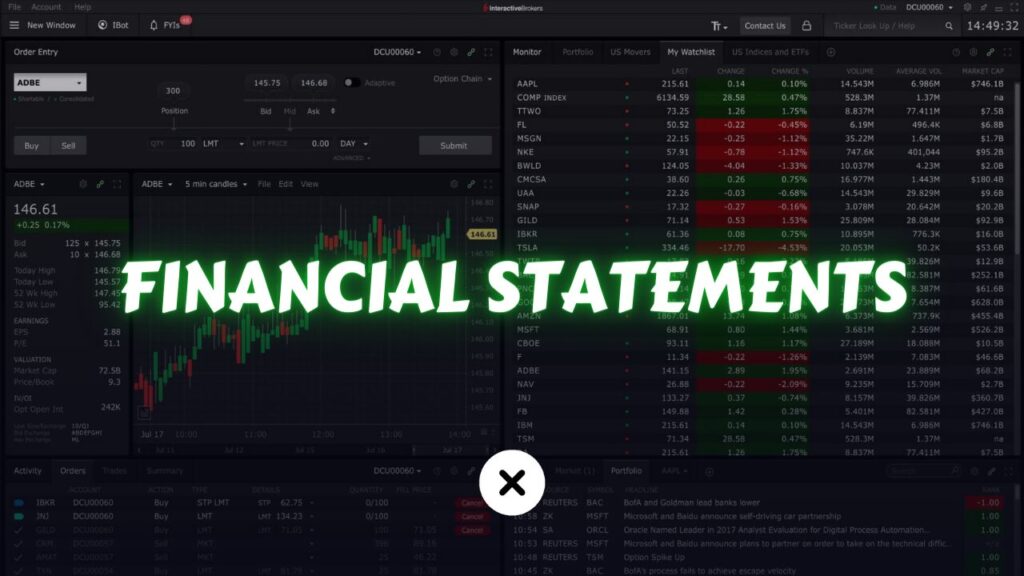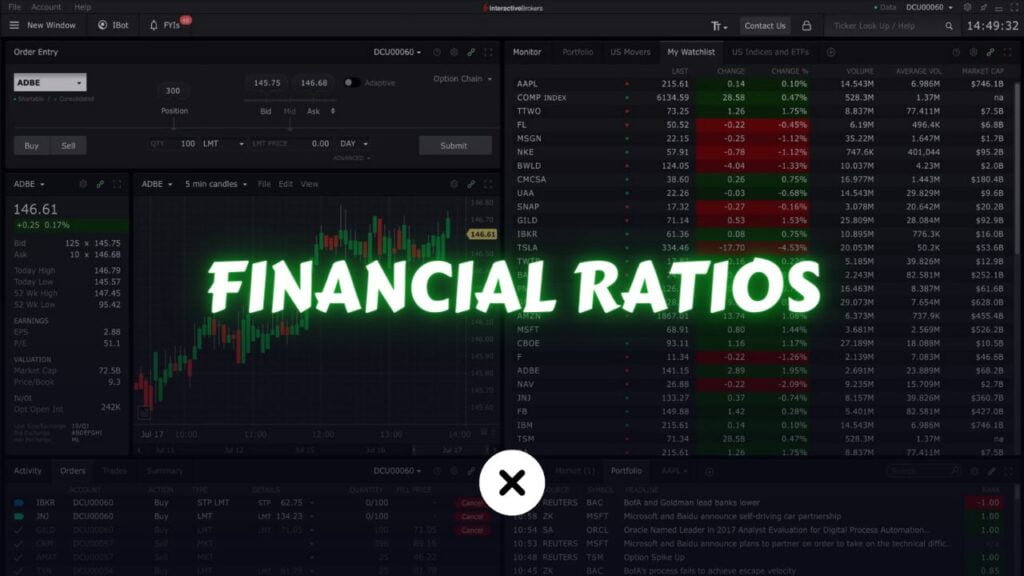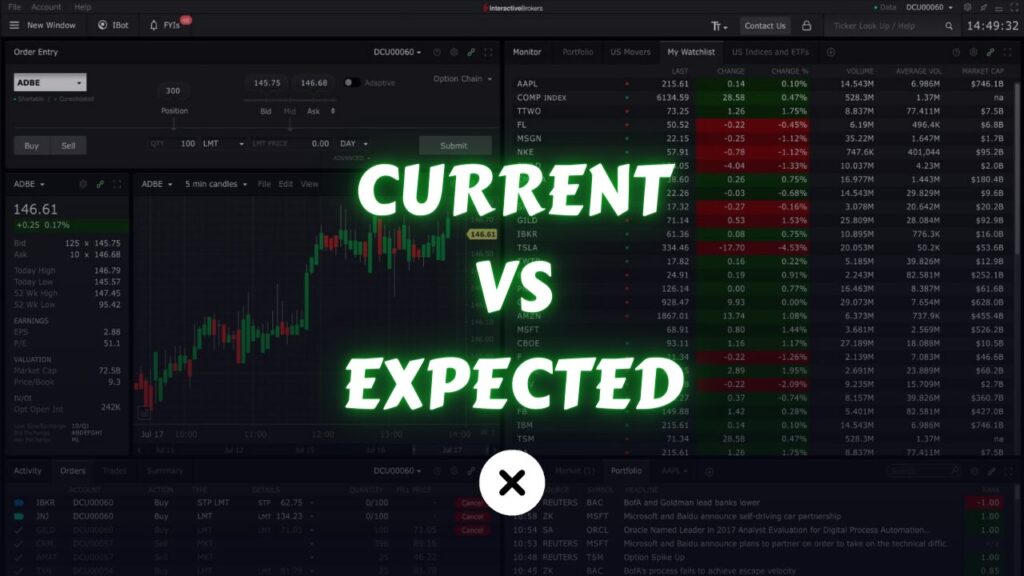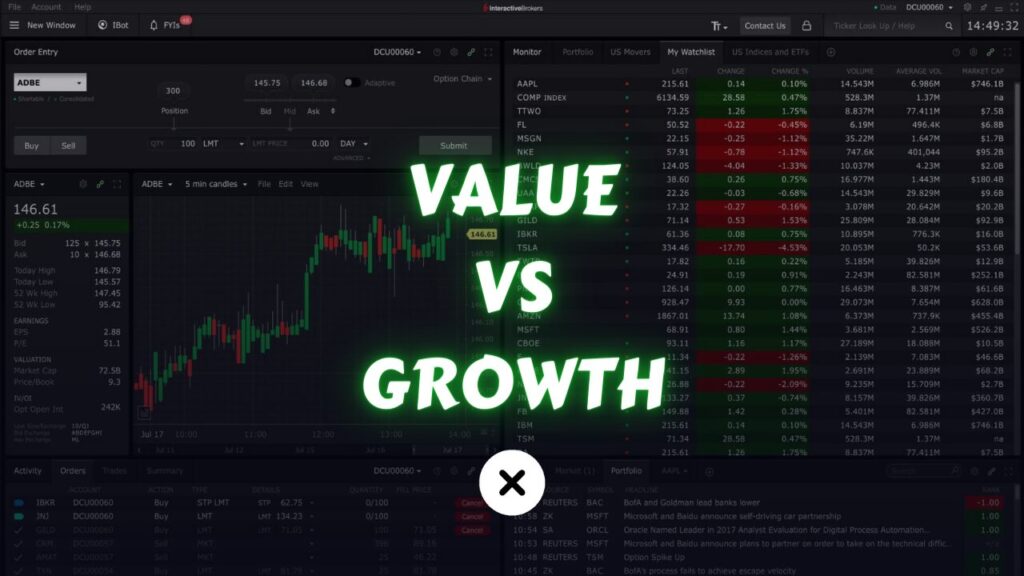
What is an investment portfolio? A financial portfolio is a collection of investments, such as stocks, bonds, real estate, and other assets, that an individual or organization holds with the goal of achieving specific financial objectives.
Building a well-structured investment portfolio is a fundamental step in achieving your financial goals. Whether you’re planning for retirement, saving for a major life event, or simply looking to grow your wealth, an investment portfolio can help you navigate the complex world of finance.
Portfolios come in various types, and they vary based on how well they perform and their specific purpose. For instance, if someone plans to use their money after 40 years, they might choose a different type of portfolio compared to someone who needs their money in just 10 years.
Before you start making a portfolio, you have to think about a few things. Consider how long you want to invest, why you’re investing, and how much risk you’re comfortable with. Also, think about the kinds of assets you want in your portfolio. Decide if you want to be a passive investor, meaning you just follow the market, or an active investor, where you try to do better than the market.
There are three main types of portfolios: one with only stocks, another with stocks and bonds, and a third with stocks, bonds, commodities, cryptocurrencies and others. You get to pick based on what you like and what fits your comfort with risk and your plans for the future.
If you don’t worry too much about market crashes and plan to use your money after many years, a portfolio with only stocks might be better. On the other hand, if you want your money to grow but also want to protect it during a market crash, a portfolio with both stocks and bonds is a good choice. Keep in mind, adding bonds to your portfolio might mean giving up some extra returns for the safety of your investments.
You can also include things like real estate, commodities, or cryptocurrencies if you’d like. It’s really up to what you prefer and how much risk you’re comfortable with. A portfolio with cryptocurrencies is quite risky but also has the potential for big returns. So, all portfolios have their good and not-so-good sides.
To help you pick the type of portfolio you want to create and decide on the assets you want to invest in, let’s explore the strategies used in building a portfolio. By doing this, you can easily comprehend the types of portfolios we’ll explore later.
Portfolio management strategies
These are the important strategies to think about when creating a portfolio. A successful portfolio should include these elements.
Dollar-Cost Averaging:
Dollar-Cost Averaging (DCA) is a strategy in portfolio management where investors consistently invest a fixed amount of money at regular intervals, regardless of the asset’s price.
This approach aims to reduce the impact of market volatility and eliminates the need for precise market timing. It involves automatic and disciplined contributions, allowing investors to buy more shares when prices are low and fewer when prices are high. Over time, DCA can result in a lower average cost per share, promoting long-term wealth accumulation with reduced emotional stress.
Investing regularly with Dollar-Cost Averaging and allowing your money to compound over time could be crucial aspects of successful investment.
Diversification:
Diversification in portfolio management is a strategy that involves spreading investments across different types of assets, industries, and geographic regions to reduce risk.
The goal is to avoid overreliance on any single investment, mitigating the impact of poor performance in one area and enhancing the potential for more stable returns overall. This approach seeks to achieve a balance between risk and return by combining assets with different risk profiles and market behaviors.
Asset Allocation:
Asset allocation is the strategic distribution of investments among various asset classes to balance risk and return. It involves deciding how much of a portfolio should be in stocks, bonds, and other assets.
Diversification, on the other hand, is the tactic of spreading investments within each asset class to further minimize risk. It involves investing in a variety of individual stocks or bonds, for instance, rather than concentrating on just one.
In short, asset allocation focuses on the broad categories of investments, while diversification is about spreading investments within those categories.
Rebalancing:
Rebalancing in portfolio management is the process of adjusting the mix of assets in a portfolio to maintain the desired level of risk and return.
Over time, as market values change, the original asset allocation may deviate. Rebalancing involves buying or selling assets to bring the portfolio back to its target allocation. This ensures that the portfolio remains aligned with the investor’s goals and risk tolerance, preventing it from becoming too conservative or too aggressive. Regular rebalancing is a proactive strategy to manage risk and optimize the performance of the portfolio over the long term.
Active vs Passive Management:
Active management involves frequent buying and selling of assets in an attempt to outperform the market, while passive management aims to match the performance of a specific market index.
Active managers make strategic decisions to beat market returns, while passive managers follow a set index, reducing trading and associated costs. The choice between active and passive management depends on an investor’s belief in the ability to beat the market and the desired level of involvement in portfolio decisions.
Tactical Asset Allocation:
Tactical Asset Allocation in portfolio management involves making short-term adjustments to the mix of assets based on current market conditions. This strategy allows investors to capitalize on immediate opportunities or mitigate risks. Tactical Asset Allocation complements long-term strategic planning by adapting the portfolio to changing market dynamics.
Building a investment portfolio
There isn’t a single correct way to create a portfolio—it’s all about what you like and how much risk you’re okay with. Whether you’re a passive or active investor, keeping your money safe involves diversification, choosing the right mix of assets, and making adjustments to maintain that mix.
You have to decide how much you want to do in the market. You can just let your portfolio grow without doing much, or you can be more active, adjusting it from time to time, aiming to outperform the market.
Your involvement begins with choosing asset allocation, followed by selecting securities, then comes rebalancing, and finally, tactical asset allocation.
If you’re a passive investor, you still need to pick the ETFs you want to invest in and decide how to divide your money among them. You can adjust this allocation from time to time if you want to improve performance or just leave it as is. Of course, as a passive investor, you can stick with buying and holding. We’ll discuss asset allocation more in the future.
You might be wondering, if passive investing follows a specific index and that index adjusts its asset allocation, why would you need to rebalance yourself? Well, yes, the ETF takes care of the stocks in it, but not for your specific portfolio. Let’s say you initially wanted 80% of your portfolio in SPY and 20% in TLT (a long-term Treasury bond ETF). After some time, due to their performance, maybe SPY becomes 85% and TLT becomes 15%. According to your plan, it should be 80% and 20%, so you sell some of your SPY and buy TLT to get back to your desired balance. This is called rebalancing.
I want to mention that outperforming the market is really tough, even for the pros. If you’re not a stock market expert and just want to invest, a passive portfolio is a better choice. Just keep buying and holding a few ETFs. However, you still need to decide how much of each ETF you want in your portfolio if you are investing in multiple ETFs.
On the flip side, if you’re an active investor aiming to outperform the market, you’ve got to be more engaged. Like passive investors, you need to pick the assets you want to invest in and decide how to divide your money among them. However, since you’re selecting individual stocks and ETFs, it’s crucial to ensure proper diversification. You also have to keep your asset allocation and diversification in check by rebalancing when they shift from your initial plan.
If you want to be more involved, you can try tactical allocation. It’s optional, but if done right, it can bring in good returns. Essentially, you need to know what to hold at different times. We’ll explore more about tactical allocation later on.
Creating an active portfolio from scratch, choosing individual stocks, ETFs, cryptos, and commodities, is really challenging. You need to be well-informed about what you’re doing, figuring out how much to invest in each, and ensuring proper diversification. Big investors do this, but we’re not experts like them—though we can give it a shot. An easier way to begin is to find pre-made portfolios online. You can pick one and tweak it to fit your needs. By studying these, you can learn how to build your own in the future.
Types of investment portfolios
Here are different types of portfolios for you to choose from based on your situation. There’s no one-size-fits-all “best” portfolio; it depends on your preferences. Experiment with them using the Portfolio Visualizer tool to see how they perform with your chosen assets over time. Decide which one suits you best. We’ll delve into this further in future posts.
You can find stocks using finviz.
1. Conservative Portfolio
A Conservative Portfolio is an investment strategy that prioritizes capital preservation and income stability over high returns. The primary goal is to protect the invested capital while generating a steady stream of income. Key characteristics of a conservative portfolio include:
Asset Allocation: The portfolio often consists of a higher percentage of low-risk assets, such as high-quality bonds and stable dividend-paying stocks. These assets provide a more stable foundation for the portfolio.
Risk Tolerance: Conservative investors typically have a lower tolerance for risk. They are more focused on preserving their capital and are willing to accept potentially lower returns in exchange for a more stable investment.
Income Generation: Conservative portfolios often include income-generating assets, such as bonds with regular interest payments or dividend-paying stocks. This income can provide a source of cash flow, which may be especially important for retirees.
Stability in Market Fluctuations: The portfolio is designed to withstand market downturns with less volatility. While it may not experience significant growth during bull markets, it aims to minimize losses during bear markets.
Long-Term Horizon: Conservative portfolios are often associated with a longer investment horizon, suitable for individuals who may be approaching retirement or those who prioritize stability and preservation of wealth over aggressive growth.
Diversification: Even within the conservative approach, diversification is important. Allocating investments across different asset classes helps reduce the impact of poor performance in any single investment.
Example of Assets in a Conservative Portfolio:
- High-quality government bonds.
- Blue-chip stocks with a history of stable dividends.
- Certificates of Deposit (CDs) or other fixed-income instruments.
- Defensive sectors such as utilities and consumer staples.
2. Aggressive Portfolio
An Aggressive Portfolio is an investment strategy that prioritizes capital appreciation and seeks higher returns, often at the expense of higher risk. This type of portfolio is designed for investors with a higher tolerance for risk and a longer time horizon.
Asset Allocation: Aggressive portfolios typically have a higher allocation to growth-oriented and higher-risk assets, such as stocks of emerging companies, technology, and other sectors with potential for significant returns.
Risk Tolerance: Aggressive investors are willing to take on higher levels of risk in pursuit of potentially higher rewards. They understand that the value of their investments may experience more significant fluctuations in the short term.
Equity Investments: A substantial portion of an aggressive portfolio is allocated to stocks, particularly those with high growth potential. This may include small-cap stocks, growth stocks, and sectors known for volatility.
International and Emerging Market Exposure: Aggressive portfolios often include exposure to international and emerging markets, providing diversification and the opportunity for higher returns.
Alternative Investments: Aggressive investors may allocate a portion of their portfolio to alternative investments, such as hedge funds, private equity, or cryptocurrencies, to enhance returns.
Limited Fixed-Income Exposure: Compared to conservative portfolios, aggressive portfolios may have a lower allocation to fixed-income securities. Bonds and other fixed-income instruments play a smaller role in the portfolio’s overall composition.
Sector Concentration: Aggressive portfolios may concentrate investments in specific sectors or industries with high growth potential. This concentration increases the potential for significant gains but also heightens exposure to sector-specific risks.
Active Management: Aggressive investors may opt for active portfolio management, frequently buying and selling assets to capitalize on market opportunities and trends.
Examples of Assets in an Aggressive Portfolio:
- Technology Stocks: Companies with high growth potential in the technology sector.
- Small-Cap Stocks: Stocks of smaller companies with potential for rapid expansion.
- High-Growth Sectors: Investments in sectors like biotechnology, artificial intelligence, or renewable energy.
- Emerging Market Equities: Stocks from economies that are considered emerging or developing.
- Cryptocurrencies: Digital assets like Bitcoin or Ethereum.
- Aggressive Growth Funds: Mutual funds or exchange-traded funds (ETFs) specifically focused on aggressive growth strategies.
It’s important to note that while aggressive portfolios offer the potential for higher returns, they also come with increased volatility and a higher likelihood of short-term losses. Investors considering an aggressive approach should carefully assess their risk tolerance, investment goals, and time horizon before building such a portfolio.
3. Balanced Portfolio
A Balanced Portfolio is an investment strategy that seeks to create a mix of different asset classes to achieve a balance between capital appreciation and income generation while managing risk. This approach is designed to provide a middle-ground solution for investors who want both growth potential and stability.
Asset Allocation: A balanced portfolio typically includes a mix of both equities (stocks) and fixed-income securities (bonds). The allocation aims to combine the growth potential of stocks with the income-generating and risk-mitigating characteristics of bonds.
Risk Tolerance: Investors with a moderate risk tolerance often favor balanced portfolios. This strategy acknowledges the need for some risk to achieve growth while also incorporating elements to reduce overall portfolio volatility.
Diversification: Diversification is a fundamental principle of a balanced portfolio. By spreading investments across different asset classes, industries, and geographic regions, the portfolio aims to reduce the impact of poor performance in any single investment.
Income Generation: While not as income-focused as a conservative portfolio, a balanced portfolio includes income-generating assets, such as bonds or dividend-paying stocks. This provides a source of regular income for investors.
Long-Term Focus: Balanced portfolios are often suited for investors with a medium to long-term investment horizon. The combination of growth and income aims to provide stability while allowing for capital appreciation over time.
Rebalancing: Regular monitoring and rebalancing are essential for maintaining the desired asset allocation. This involves adjusting the portfolio back to its target mix, ensuring that it aligns with the investor’s risk tolerance and financial goals.
Examples of Assets in a Balanced Portfolio:
- Diversified Equity Holdings: Blue-chip stocks and exchange-traded funds (ETFs) representing various sectors.
- Fixed-Income Securities: Government bonds, corporate bonds, or bond funds to provide stability and income.
- Real Estate Investment Trusts (REITs): Real estate assets that offer a balance of growth and income.
- Balanced Mutual Funds: Funds specifically designed to maintain a balanced mix of stocks and bonds.
- Dividend-Paying Stocks: Stocks of established companies with a history of stable dividends.
- International Equities: Exposure to global markets for additional diversification.
4. Income Portfolio
An Income Portfolio is an investment strategy designed primarily to generate a steady stream of income for investors. This approach is well-suited for individuals who prioritize regular cash flow over capital appreciation and are often in or approaching retirement.
Asset Allocation: The primary focus of an income portfolio is on income-generating assets. This often includes fixed-income securities such as bonds, dividend-paying stocks, and other instruments that provide regular payouts.
Fixed-Income Securities: The core of an income portfolio typically consists of bonds, including government bonds, municipal bonds, and corporate bonds. These securities offer predictable interest payments, providing a stable income stream.
Dividend-Paying Stocks: Stocks of established companies with a history of paying dividends are commonly included in income portfolios. These stocks offer the dual benefit of potential capital appreciation and regular dividend income.
Real Estate Investment Trusts (REITs): REITs are entities that own, operate, or finance income-generating real estate. Including REITs in an income portfolio adds diversification and the potential for real estate-related income.
Utility Stocks: Companies in the utility sector, such as those providing electricity, water, and gas services, often have stable cash flows and pay regular dividends. These stocks are considered defensive and suitable for income-focused portfolios.
Preferred Stocks: Preferred stocks combine characteristics of both stocks and bonds. They offer higher yields than common stocks and rank higher in terms of claim on assets in the event of liquidation.
High-Dividend Funds: Mutual funds or exchange-traded funds (ETFs) that specifically focus on high-dividend-yielding stocks may be included to enhance the overall income potential.
Income-Generating Alternatives: Some income portfolios may include alternative investments like master limited partnerships (MLPs) or certain closed-end funds that provide regular distributions.
Conservative Equities: While the primary goal is income, some income portfolios may include conservative equity holdings for potential capital appreciation. These equities are often selected for stability and lower volatility.
Income portfolios are particularly attractive to retirees or those seeking a regular income stream from their investments. It’s important to note that the emphasis on income may result in a lower level of capital growth compared to more growth-oriented portfolios.
5. Index Portfolio
An Index Portfolio is an investment strategy that seeks to replicate the performance of a specific market index. Instead of actively selecting individual stocks or securities, investors in an index portfolio aim to mirror the returns of a particular benchmark index. this is a passive portfolio.
Passive Management: Index portfolios are managed passively, meaning there is no active decision-making about which securities to buy or sell. The goal is to match the performance of a chosen market index.
Benchmark Index: The portfolio is designed to track the performance of a well-known market index, such as the S&P 500, which represents a broad cross-section of large-cap U.S. stocks. Other examples include the Dow Jones Industrial Average, NASDAQ Composite, or global indices like the MSCI World.
Diversification: By replicating the composition of a market index, index portfolios inherently provide diversification across multiple stocks or securities within that index. This helps spread risk and reduce the impact of poor performance in any single stock.
Low Cost: Index portfolios are often associated with lower management fees and transaction costs compared to actively managed funds. This is because the investment strategy involves minimal trading and decision-making.
Low Turnover: Since the goal is to mirror the index, there is typically low turnover of securities within the portfolio. This contributes to lower transaction costs and potential tax efficiency.
Market-Cap Weighted: Many index portfolios use a market-capitalization-weighted approach. This means that the weight of each stock in the portfolio is proportional to its market capitalization, giving larger companies a higher impact on the portfolio’s performance.
Efficient Market Hypothesis (EMH): The strategy underlying index portfolios aligns with the Efficient Market Hypothesis, which posits that it is challenging to consistently outperform the market through active management. Therefore, the goal is to capture the market return.
Examples of Index Portfolios:
- S&P 500 Index Portfolio: This portfolio aims to replicate the performance of the S&P 500, consisting of 500 of the largest publicly traded U.S. companies.
- Total Stock Market Index Portfolio: This broader portfolio seeks to mirror the performance of the entire U.S. stock market, including large, mid, small-cap stocks.
- MSCI All Country World Index (ACWI) Portfolio: This global index portfolio includes stocks from both developed and emerging markets, providing worldwide diversification.
- Bond Index Portfolio: Investors can also create index portfolios that track bond indices, such as the Bloomberg Barclays U.S. Aggregate Bond Index.
Index portfolios are popular among investors who believe in the efficiency of financial markets and want a low-cost, diversified investment approach. They offer a straightforward way to gain exposure to specific market segments without relying on active management decisions.
6. Sector-Specific Portfolio
A Sector-Specific Portfolio is an investment strategy that concentrates on a particular industry or sector of the economy. Instead of diversifying across various sectors, investors in a sector-specific portfolio focus on assets within a specific market segment.
Industry Concentration: This portfolio strategy involves allocating a significant portion of investments to a specific industry or sector, such as technology, healthcare, energy, or consumer goods.
Targeted Exposure: Investors choose a sector-specific portfolio to gain targeted exposure to the performance and potential growth of a particular industry they believe will outperform the broader market.
In-Depth Research: Successful management of a sector-specific portfolio requires in-depth research and understanding of the specific industry dynamics, including factors influencing supply and demand, regulatory changes, and technological advancements.
Higher Volatility: Due to the concentrated exposure to a single sector, these portfolios often experience higher volatility compared to more diversified portfolios. Sector-specific investments can be more sensitive to industry-specific events.
Potential for Higher Returns: The focused nature of a sector-specific portfolio provides the potential for higher returns if the selected sector performs well. However, it also increases the risk if the sector faces challenges.
Active Management: Managing a sector-specific portfolio typically involves active decision-making, such as selecting individual stocks within the chosen sector and adjusting the portfolio based on changing market conditions.
Examples of Sector-Specific Portfolios:
- Technology Sector Portfolio: Concentrates on technology-related companies, including those involved in software, hardware, and semiconductor industries.
- Healthcare Sector Portfolio: Focuses on companies within the healthcare industry, including pharmaceuticals, biotechnology, and healthcare services.
- Energy Sector Portfolio: Concentrates on companies involved in the exploration, production, and distribution of energy, including oil and gas companies.
- Consumer Discretionary Sector Portfolio: Targets companies in consumer-oriented industries, such as retail, automotive, and leisure.
- Financial Sector Portfolio: Concentrates on financial institutions, including banks, insurance companies, and investment firms.
It’s important to note that investing in sector-specific portfolios involves a higher level of risk compared to more diversified strategies. The success of such portfolios depends on the accurate assessment of industry trends and the ability to navigate sector-specific challenges. Investors interested in sector-specific portfolios should carefully monitor their investments and be prepared to adjust their holdings based on changes in the economic and industry landscape.
7. Global or International Portfolio
A Global or International Portfolio is an investment strategy that involves diversifying investments across various countries and regions outside the investor’s home country. The goal is to gain exposure to international markets, tap into the potential for global economic growth, and achieve greater diversification.
Geographic Diversification: This portfolio strategy aims to spread investments across different countries and regions worldwide. It recognizes that economic conditions, market trends, and geopolitical factors can vary significantly from one region to another.
Currency Exposure: Investments in a global portfolio may involve exposure to multiple currencies. Currency risk arises as exchange rates fluctuate, impacting the value of investments denominated in foreign currencies when converted back to the investor’s home currency.
Global Economic Trends: Investors in a global portfolio consider global economic trends and factors that may affect various regions, such as interest rates, inflation, and political stability.
Access to Different Sectors: A global portfolio allows investors to access industries and sectors that may be more prominent or have higher growth prospects in specific regions. This provides the opportunity to benefit from diverse economic drivers.
International Equities and Bonds: The portfolio may include international stocks and bonds. International equities represent shares in companies based outside the investor’s home country, while international bonds are debt securities issued by foreign entities.
Exchange-Traded Funds (ETFs) and Mutual Funds: Investors often use global or international ETFs and mutual funds to gain exposure to a broad range of international assets. These funds may track global indices or focus on specific regions or countries.
Risk and Return Considerations: While global portfolios offer diversification benefits, they also come with additional risks, including currency risk, geopolitical risk, and regulatory differences. The potential for higher returns is associated with the growth opportunities in international markets.
Examples of Global or International Portfolios:
- MSCI All Country World Index (ACWI) Portfolio: This global index includes stocks from both developed and emerging markets, providing a comprehensive representation of the global equity market.
- Developed Market Ex-U.S. Portfolio: Focuses on stocks and bonds from developed countries outside the investor’s home country.
- Emerging Markets Portfolio: Concentrates on stocks and bonds from emerging market economies, which often have higher growth potential but also higher volatility.
- Regional Portfolios: Investors may create portfolios that focus on specific regions, such as Asia-Pacific, Europe, or Latin America.
8. Retirement Portfolio
A Retirement Portfolio is an investment strategy specifically designed to meet the financial needs of individuals during their retirement years. The primary goal of a retirement portfolio is to provide a sustainable income stream while preserving and growing the invested capital.
Income Generation: A significant focus of a retirement portfolio is on generating a reliable and steady income to cover living expenses during retirement. This income can come from various sources, including dividends, interest payments, and annuities.
Capital Preservation: While providing income is crucial, preserving the capital is equally important to ensure that the portfolio can continue to support the retiree’s lifestyle throughout their retirement years. This involves selecting investments with a lower risk profile.
Diversification: Diversification is key to managing risk in a retirement portfolio. By spreading investments across different asset classes, sectors, and geographic regions, the portfolio aims to reduce the impact of poor performance in any single investment.
Risk Tolerance Adjustments: As individuals approach retirement, their risk tolerance may change. Retirement portfolios often become more conservative, with a gradual shift from higher-risk, higher-reward investments to more stable, income-generating assets.
Withdrawal Strategies: Retirees need to carefully plan how they will withdraw funds from their portfolio to meet living expenses. Strategies may include systematic withdrawals, annuitization, or a combination of income sources.
Inflation Protection: Considering the potential impact of inflation is essential in a retirement portfolio. Investments that offer protection against inflation, such as certain equities and Treasury Inflation-Protected Securities (TIPS), may be included to help maintain purchasing power.
Tax Efficiency: Retirement portfolios often consider tax implications to minimize the impact of taxes on income generated from investments. Strategies may involve tax-efficient investments, tax-deferred accounts, and tax planning.
Long-Term Perspective: Since retirement can span several decades, a retirement portfolio needs to have a long-term perspective. It should be structured to support a retiree’s financial needs throughout their retirement, which could last 20 years or more.
Examples of Assets in a Retirement Portfolio:
- Dividend-Paying Stocks: Stocks of established companies with a history of stable dividends.
- Bonds: Including a mix of high-quality bonds, such as government and corporate bonds, to provide income and stability.
- Real Estate: Real Estate Investment Trusts (REITs) that offer exposure to the real estate market.
- Annuities: Certain types of annuities that provide regular income payments.
- Tax-Advantaged Accounts: Utilizing tax-advantaged retirement accounts such as IRAs and 401(k)s.
- Healthcare Investments: Considering investments related to healthcare to address potential medical expenses in retirement.
Conclusion
For most people, an index portfolio could be the top choice. You don’t need to dive deep into stock studies, manage your portfolio extensively, and it’s cost-effective.
If you prefer an active approach, you can decide how involved you want to be. This includes adjusting asset allocations, rebalancing, and using tactical asset allocation. Alternatively, you can choose to focus solely on asset allocation without additional actions, or you can actively engage in all of these strategies. The point is, even with passive portfolio types using ETFs, you can still incorporate practices like rebalancing. its really up to you what you wanna do and not.
Keep in mind, being active implies trying to outdo the market. If your active efforts fall short, it’s more advantageous to think about a passive approach. The US market generally yields around 10% annually. So, if you’re active, you’d need to surpass this 10% for it to be worthwhile. If not, there’s no point in being active. The choice between an active or passive portfolio is entirely up to you.



